how to analyse prose fiction
Close reading is the most important skill you need for any form of literary studies. It means paying especially close attention to what is printed on the page. It is a much more subtle and complex process than the term might suggest. Close reading means not only reading and understanding the meanings of the individual printed words; it also involves being sensitive to all the subtle uses of language in the hands of skilled writers.
This can mean anything from a work’s particular vocabulary, sentence construction, and imagery, to the themes that are being explored. It also includes the way in which the story is being told, and the view of the world that it offers. It involves almost everything from the smallest linguistic items to the largest issues of literary understanding and judgement.
One of the first things you need to acquire for serious literary study is a knowledge of the vocabulary, the technical language, indeed the jargon in which literature is discussed. You need to acquaint yourself with the technical vocabulary of the discipline and then go on to study how its parts work.
What follows is a short list of features you might keep in mind whilst reading. They should give you ideas of what to look for. It is just a prompt to help you get under way.
Close reading – Checklist
Vocabulary
The author’s choice of individual words – which might vary from plain and simple to complex and ‘literary’.Syntax
The arrangement of words in sentences. Often used for emphasis or dramatic effect.Figures of speech
The rhetorical devices used to give decoration and imaginative expression to literature, such as simile, metaphor, puns, alliteration, and irony.Literary devices
The devices commonly used in literature to give added depth to the work, such as imagery or symbolism.Rhythm
The cadence or flow of words and phrases – including stress and repetition.Narrator
Ask yourself, who is telling the story.Narrative mode
First or third person narrator. (‘I am going to tell you …’ or ‘He left the room in a hurry’)Point of view
The perspective from which the events of the story are related.Characterisation
How a character is created or depicted.Dramatisation
How any dramatic elements of a piece of work are created and arranged.Plot
How the elements of the story are arranged.Tone
The author’s attitude to the subject as revealed in the manner of the writingStructure
The shape of the piece of work, or the connection between its parts.Theme
The underlying topic or issue, as distinct from the overt story.
How to read closely
Close reading can be seen as a form of special attention which we bring to a piece of writing. It involves thinking more deeply than usual about the implications of the words on the page. Most normal people do this automatically, without being specially conscious of the fact. The academic study of literature brings the process more to the surface and makes it explicit. There are four levels or types of reading which become progressively more complex.
Language – You pay especially close attention to the surface elements of the text – that is, to aspects of vocabulary, grammar, and syntax. You might also note such things as figures of speech or any other features which contribute to the writer’s individual style.
Meaning – You take account at a deeper level of what the words mean – that is, what information they contain, plus any further meanings they might suggest.
Structural – You note the possible relationships between words within the text – and this might include items from either the language or the meanings.
Cultural – You note the relationship of any elements of the text to things outside it. These might be other pieces of writing by the same author,
or other writings of the same type by different writers. They might be items of social or cultural history, or even other academic disciplines which might seem relevant, such as philosophy or psychology.
Close reading is not a skill which can be developed to a sophisticated extent overnight. It requires a lot of practice in the various linguistic and literary disciplines involved – and it requires that you do a lot of reading.
The good news is that most people already possess the basic skills required. They have acquired them automatically through being able to read – even though they haven’t been conscious of doing so. This is rather like many other things which we learn unconsciously. After all, you don’t need to know the names of your leg muscles in order to walk down the street.
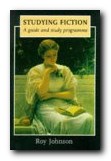 Studying Fiction is an introduction to the basic concepts and the language you will need for studying prose fiction. It explains the elements of literary analysis one at a time, then shows you how to apply them. The guidance starts off with simple issues of language, then progresses to more complex literary criticism.The volume contains stories by Arthur Conan Doyle, Katherine Mansfield, Thomas Hardy, Joseph Conrad, D.H. Lawrence, and Charles Dickens. All of them are excellent tales in their own right. The guidance on this site was written by the same author.
Studying Fiction is an introduction to the basic concepts and the language you will need for studying prose fiction. It explains the elements of literary analysis one at a time, then shows you how to apply them. The guidance starts off with simple issues of language, then progresses to more complex literary criticism.The volume contains stories by Arthur Conan Doyle, Katherine Mansfield, Thomas Hardy, Joseph Conrad, D.H. Lawrence, and Charles Dickens. All of them are excellent tales in their own right. The guidance on this site was written by the same author.
Buy the book from Amazon UK
Buy the book from Amazon US
Now here’s an example of close reading in action. The short passage which follows comes from Katherine Mansfield’s short story The Voyage. This concerns the journey made by a young girl at night on a ferry with her grandma. If you wish to read the complete story in conjunction with these tutorial notes, it is available free at Project Gutenberg.
If you would like to treat this as an interactive exercise, read the passage through a number of times. Make notes, and write down all you can say about what goes to make up its literary ‘quality’. That is, you should scrutinise the passage as closely as possible, name its parts, and say what devices the author is using. Don’t be afraid to list even the most obvious points.
Don’t worry if you are not sure what name to give to any feature you notice. You will see the technical vocabulary being used in the discussion notes which follow, and this should help you pick up this skill as we go along.
Fenella’s father pushed on with quick, nervous strides. Beside him her grandma bustled along in her crackling black ulster; they went so fast she had now and again to give an undignified little skip to keep up with them. As well as her luggage strapped into a neat sausage, Fenella carried clasped to her grandma’s umbrella, and the handle, which was a swan’s head, kept giving her shoulder a sharp little peck as if it too wanted her to hurry. … Men, their caps pulled down, their collars turned up, swung by; a few women all muffled scurried along; and one tiny boy, only his little black arms and legs showing out of a white wooly shawl, was jerked along angrily between his father and mother; he looked like a baby fly that had fallen into the cream.
Here are some comments, using the checklist as a guide. The objective is not to be totally exhaustive, mulling over every single word and punctuation mark in the paragraph. Rather, it’s to develop the skill of being sensitive to language, and to notice special effects when they are offered.
It’s also true that a really in depth close reading is much easier if you know the author’s work well – so that you can see regular patterns of language use and recurrent effects and themes.
Vocabulary
The language of the passage is fairly plain and simple. Apart from the term ulster (an overcoat) which might not be familiar to readers today, most of the terms used would be known even to a reasonably well-educated child. And this is entirely appropriate since Mansfield is relating the story to us largely from a child’s point of view. Her use of terms such as ‘>little skip’, ‘ neat sausage’, ‘tiny boy’, and baby fly reinforce this effect.
Syntax
The word order and grammar is that of normal written English. The only feature I can observe here under this heading is that in some clauses she separates the subject from its verb by interposing dependent clauses – ‘Men, their caps pulled down, their collars turned up, swung by’. But this is just giving variety to her construction of sentences.
Rhythm
She creates a briskness and liveliness in her prose to match the business of what is going on in the scene. This is done by the variation of sentence length. The first is quite short, the second is longer, but it is split into two which have a similar construction to the first.
It’s also done by her use of a form of repetition called parallelism. Notice how ‘quick, nervous strides’ is echoed by ‘crackling black ulster’: the construction is ‘adjective + adjective + noun’.
Figures of Speech
Under figures of speech you might have noticed the simile – ‘like a baby fly that had fallen into the cream’. That is, the small baby boy is directly compared to a fly. Then there is an example of onomatopoeia in the phrase ‘crackling black Ulster‘ – because the words themselves sound like the thing they are describing.
There is also an example of anthropomorphism in the swan’s-head-handled umbrella giving Fenella a ‘sharp little peck’ on the shoulder. That is, the inanimate object is spoken of as if it were alive – and once again this is entirely appropriate given that the story is being told from the child’s point of view.
Mansfield also uses alliteration more than once. In ‘crackling black Ulster’ there is repetition of the ‘a’, ‘ck’, and ‘l’ sounds; and in ‘white wooly shawl’ there is repetition of the ‘w’ and the ‘l’ sounds.
Tone
This can be quite a difficult feature to pin down accurately, but I think in this passage you could say that there was a light, brisk and somewhat playful attitude to what is going on. That’s the safest way of defining tone – describing the author’s attitude to the subject as briefly as possible. The tone here is entirely appropriate – because we are being invited to see the world from a child’s point of view.
Narrative mode
This is the traditional manner of story-telling using the third person and omniscient narrator. That is, Fenella is referred to as ‘she’ and Katherine Mansfield, as the person telling the story, does not intrude as an ‘I’ speaking directly to the reader. Moreover, as narrator, she knows what is going on in her characters’ heads and their feelings. She is ‘all-knowing’, which is what ‘omniscient’ means.
Narrator
This must be Katherine Mansfield, because she does not invent another person who stands between herself and the reader, telling the story. This might seem rather obvious, but some authors invent a fictional narrator who tells the story, and might even be a character in it.
Characterisation
It’s not easy to say a lot, based on such a short extract. But you might observe that ‘grandma bustled along’, which gives the impression of a lively older woman. (This is confirmed by events later in the story). And the observations about the umbrella and the little boy, as well as the ‘little skip’ Fenella is forced to make, help to establish her as a young girl.
Notice that Mansfield as narrator does not tell us that Fenella is a young girl: we work this out from the few details we have been given. Notice too that this information about the characters is being given piecemeal as the story progresses. We are being left to put together these pieces ourselves.
Point of view
Many of these small details – the peck from the swan’s head umbrella, the little boy looking like a fly – help to establish that the story is being told from Fenella’s point of view. That is, the events of the story are being shown as she would experience and see them. This is quite an important feature of prose fiction.
Drama
It’s not easy to say much about this based on such a short extract – or if we were reading the story for the first time. But most of the tension in the story is created by the fact that we are not quite sure what is going on. But returning with more knowledge of the story, we might note that the father is ‘nervous’ because he is due to be separated from his mother and his daughter. The grandmother ‘bustles’ along because she has the task of conveying Fenella to her new life.
Meanwhile Fenella is busy observing the world around her. Notice a small (and dramatic) detail of the world she sees. The little boy is being ‘jerked along angrily between his father and mother’ [my emphasis]: that is, the way some adults treat their children is not so pleasant.
We’ll stop at this point. It’s not really possible to say anything about plot, structure, or theme unless you’ve read the whole story. But almost everything listed was accessible even if you were reading the passage for the first time.
Literary studies are not conducted in such detail all the time, but it is very important that you try to develop the skill of reading as closely as possible. It really is the foundation on which everything else is based.
The next point to make about such close reading is that it becomes easier if you get used to the idea of reading and re-reading a piece of work. The Russian novelist Vladimir Nabokov (famous for Lolita) once observed that “Curiously enough, one cannot read a book: one can only re-read it”.
What he meant by this apparently contradictory remark is that the first time we read a book we are busy absorbing information, and we cannot appreciate all the subtle connections there may be between its parts – because we don’t yet have the complete picture before us. Only when we read it for a second time (or even better, a third or fourth) are we in a position to assemble and compare the nuances of meaning and the significance of its details in relation to each other.
That’s why the activity is called ‘close reading’. You should try to get used to the notion of reading and re-reading very carefully, scrupulously, and in great detail.
Finally, let’s try to dispel a common misconception. Many people ask, when they first come into contact with close reading: “Doesn’t analysing a piece of work in such detail spoil your enjoyment of it?” The answer to this question is “No – on the contrary – it should enhance it.” The simple fact is that we get more out of a piece of writing if we can appreciate all the subtleties and the intricacies which exist within it. Nabokov also suggested that “In reading, one should notice and fondle the details”.
© Roy Johnson 2004
More on Katherine Mansfield
Twentieth century literature
More on the Bloomsbury Group
More on short stories
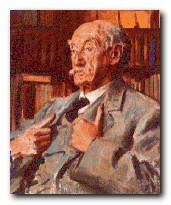 his life and major writings
his life and major writings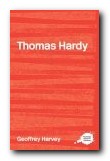 The Complete Critical Guide to Thomas Hardy
The Complete Critical Guide to Thomas Hardy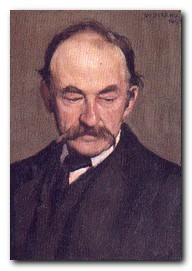
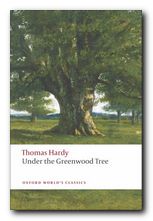 Under the Greenwood Tree
Under the Greenwood Tree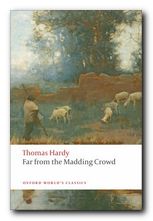 Far from the Madding Crowd
Far from the Madding Crowd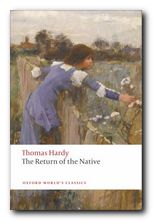 The Return of the Native
The Return of the Native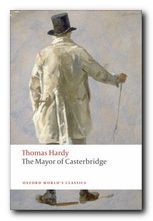 The Mayor of Casterbridge
The Mayor of Casterbridge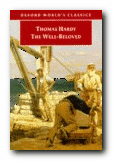
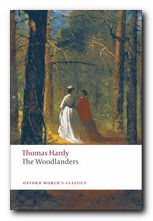 The Woodlanders
The Woodlanders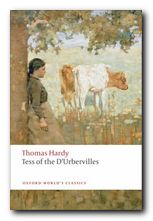 Tess of the d’Urbervilles
Tess of the d’Urbervilles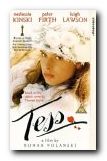 Tess: DVD
Tess: DVD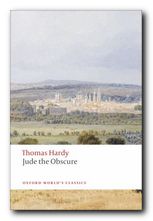 Jude the Obscure
Jude the Obscure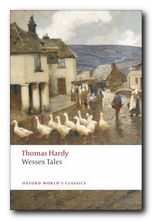 Wessex Tales
Wessex Tales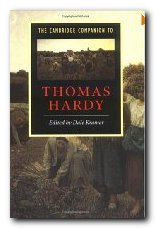 The Cambridge Companion to Thomas Hardy
The Cambridge Companion to Thomas Hardy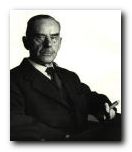 Thomas Mann’s work spans the first half of the twentieth century. He started out writing in the tradition style of the nineteenth centry, but very quickly sought out themes and motifs which place him amongst modernists. His political views went through a similar transformation, from arch conservative before and during the first world war, to a very sceptical liberal democracy after the second. Many of his works are long and dense, and his style includes such typically Germanic features of writing in huge paragraphs, with lots of philosophic meditation embedded in his narratives. Beginners are best advised to sart with his earlier work – particularly novellas such as
Thomas Mann’s work spans the first half of the twentieth century. He started out writing in the tradition style of the nineteenth centry, but very quickly sought out themes and motifs which place him amongst modernists. His political views went through a similar transformation, from arch conservative before and during the first world war, to a very sceptical liberal democracy after the second. Many of his works are long and dense, and his style includes such typically Germanic features of writing in huge paragraphs, with lots of philosophic meditation embedded in his narratives. Beginners are best advised to sart with his earlier work – particularly novellas such as 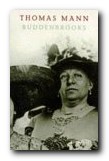 Buddenbrooks: The Decline of a Family
Buddenbrooks: The Decline of a Family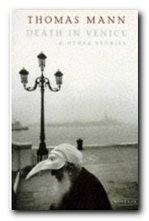 Death in Venice
Death in Venice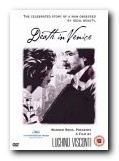 Death in Venice – video film adaptation
Death in Venice – video film adaptation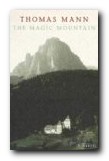 The Magic Mountain
The Magic Mountain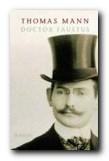 Doktor Faustus
Doktor Faustus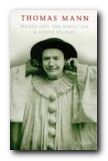 Mario and the Magician
Mario and the Magician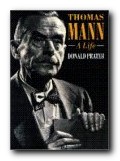 Thomas Mann: a life This exploration of Thomas Mann’s life by Donald Prater describes his relationship of intense rivalry with his brother Heinrich, who was also a novelist, his (much-concealed) homosexuality, his career as a prolific essayist, and the vast achievement of his novels. Particular attention is paid to Mann’s opposition to Nazism, and his role in the rise and fall of Hitlerism. It traces Mann’s political development from the nationalistic conservatism of his younger days, to the humanistic anti-Nazim of his maturity.
Thomas Mann: a life This exploration of Thomas Mann’s life by Donald Prater describes his relationship of intense rivalry with his brother Heinrich, who was also a novelist, his (much-concealed) homosexuality, his career as a prolific essayist, and the vast achievement of his novels. Particular attention is paid to Mann’s opposition to Nazism, and his role in the rise and fall of Hitlerism. It traces Mann’s political development from the nationalistic conservatism of his younger days, to the humanistic anti-Nazim of his maturity. 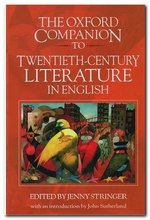 Oxford Companion to Twentieth Century Literature in English
Oxford Companion to Twentieth Century Literature in English Twentieth-century Britain
Twentieth-century Britain